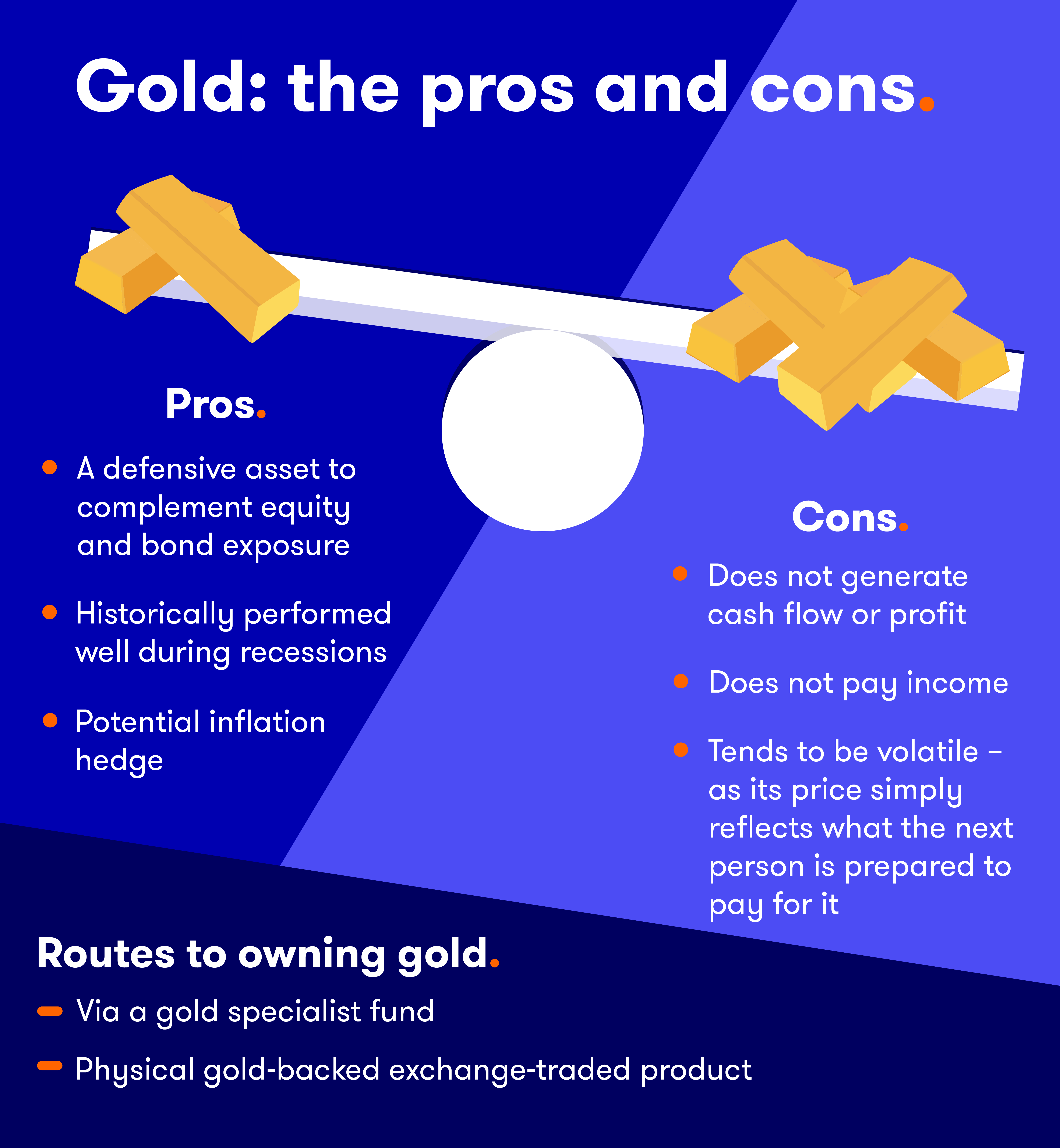War drives global surge in gold ETF demand
8th April 2022 09:25
by Sam Benstead from interactive investor
Investors turned to the precious metal in March to protect them from geopolitical uncertainty.

Gold exchange-traded funds (ETFs) globally recorded net inflows of $11.8 billion (£9 billion) in March, as investors sought protection in their portfolios following Russia’s invasion of Ukraine.
This was the highest level of monthly inflows since 2016, according to data from the World Gold Council.
Already this year total inflows have hit $16.6 billion, surpassing 2021 outflows of $9.1 billion. Total gold ETF holdings are just 1.8% shy of the all-time month-end high recorded in October 2020.
A small weighting to gold in a diversified portfolio is widely considered a sensible approach to help protect capital when stock markers fall sharply, as it is considered a “safe haven” asset by investors.
- A tactic to ride out the inflation storm using these funds and trusts
- The investment lessons from the 1970s as inflation soars and rates rise
The yellow metal is also considered to be a hedge against inflation. The theory is that as governments and central banks cannot simply print more gold, as they can currencies, gold’s value is preserved.
Gold finished March 1.7% higher at $1,942, just shy of its all-time high. However, it fell throughout the month as central banks became more convinced that they would need to increase interest rates. One ounce now costs $1,926.
Higher interest rates are typically bad for gold as gold does not pay any income. Therefore, it becomes relatively less attractive compared with reliable government bonds, considered another safe haven.
The Federal Reserve in America increased its policy rate by 0.25% to 0.5% in March, with its analysts predicting rates could exceed 3% this year.
Adam Perlaky, a senior analyst at the World Gold Council, said: “Recent geopolitical events have highlighted how investors view gold as an effective and proven hedge. As evidenced by the highest level of monthly inflows since 2016, gold-backed ETFs have served as a safe haven for investors amid the current, volatile market conditions.
“Looking forward, inflationary pressures and stagflation fears are likely to remain high. Coupled with the flattening of the Treasury yield curves, conditions will likely support gold investment demand. While higher rates may create some headwinds, gold’s dual nature as a consumer good and an investment will likely drive its recent price gains.”
Chris Watling, chief market strategist at Longview Economics, said there were numerous ways of thinking about and forecasting the gold price.
One is that it is a hedge against inflation. He said over the very long term it has been an asset class that holds its purchasing power when prices rise.
Another is that it protects against disaster, such as the “war hedging” seen in March. Finally, he noted that investors could look at interest rates as a signal for price, with higher rates seen as negative for gold.
Gold was a popular investment in March on the interactive investor platform. The iShares Physical Gold ETC moved from third to second place on the most-bought list and the WisdomTree Physical Gold GBP went from 10th to fourth.

These articles are provided for information purposes only. Occasionally, an opinion about whether to buy or sell a specific investment may be provided by third parties. The content is not intended to be a personal recommendation to buy or sell any financial instrument or product, or to adopt any investment strategy as it is not provided based on an assessment of your investing knowledge and experience, your financial situation or your investment objectives. The value of your investments, and the income derived from them, may go down as well as up. You may not get back all the money that you invest. The investments referred to in this article may not be suitable for all investors, and if in doubt, an investor should seek advice from a qualified investment adviser.
Full performance can be found on the company or index summary page on the interactive investor website. Simply click on the company's or index name highlighted in the article.